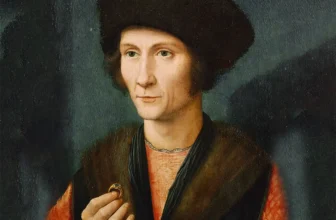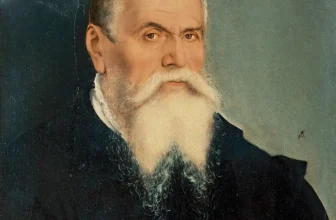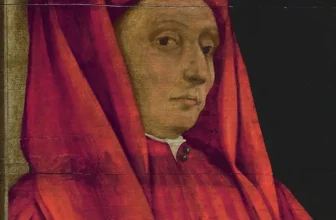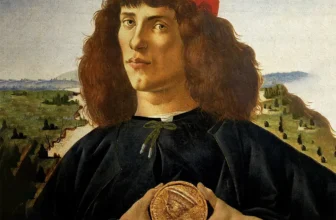Sotheby’s Record Sales in 14th–18th Century Art
A Deep Dive into Old Masters and Market Trends
The global art market has always been a fascinating mirror of history, culture, and human creativity. Few institutions have played as significant a role in shaping that market as Sotheby’s, one of the world’s oldest and most prestigious auction houses. Founded in 1744, Sotheby’s has been central to the evolution of art collecting, investment, and cultural preservation. Over the decades, Sotheby’s has made headlines for record-breaking sales of masterpieces from the 14th through the 18th centuries, a period often associated with the Old Masters.
In this article, we will explore the history of Sotheby’s record sales, focus on notable works and artists from the Renaissance, Baroque, and Enlightenment eras, analyze why these sales reach astronomical figures, and discuss what these trends mean for collectors, investors, and the art market as a whole.
The Significance of 14th–18th Century Art
The period from the 14th to the 18th century represents one of the most transformative epochs in Western art history. It covers several monumental movements:
The Renaissance (14th–16th centuries): Birth of humanism, perspective, and realism in art. Masters like Botticelli, Raphael, and Michelangelo revolutionized painting.
The Baroque period (17th century): Characterized by grandeur, drama, and bold contrasts. Caravaggio, Rubens, and Rembrandt dominated the era.
The Rococo and Enlightenment (18th century): Emphasized elegance, lightness, and a growing influence of philosophy and science on visual culture. Artists like François Boucher and Jean-Honoré Fragonard flourished.
These centuries produced works that are now cultural treasures. They not only capture the aesthetic ideals of their time but also reflect political power, religious devotion, and the evolution of European society. Sotheby’s has been a steward in bringing these works to collectors and institutions around the world.
Sotheby’s and the Old Master Market
Sotheby’s established itself as a leader in Old Master paintings, drawings, and sculptures by hosting specialized sales. Its auctions consistently attract global collectors, from seasoned private buyers to major museums and foundations.
The appeal of Old Masters at Sotheby’s comes down to several factors:
Historical Significance: Works from this era represent milestones in art history.
Provenance: Many pieces have illustrious ownership histories, adding to their value.
Rarity: With centuries of private ownership and museum acquisitions, masterpieces rarely appear on the market.
Investment Potential: Record sales prove that Old Masters remain strong assets in a diversified investment portfolio.
Sotheby’s Record Sales: 14th–18th Century Highlights
1. Sandro Botticelli – Young Man Holding a Roundel (c. 1470s)
In January 2021, Sotheby’s New York sold Botticelli’s Young Man Holding a Roundel for $92.2 million, a record not only for the artist but also for an Old Master painting at auction.
Why it mattered: Botticelli’s works are exceedingly rare on the market. This painting, an extraordinary example of Renaissance portraiture, captivated collectors with its detail and symbolism.
2. Rembrandt van Rijn – Portrait of a Man with Arms Akimbo (1658)
Sotheby’s London has consistently achieved strong results with Rembrandt. One of the artist’s commanding portraits sold for nearly $30 million, underscoring the enduring demand for Baroque masterpieces.
Market insight: Rembrandt’s name carries timeless prestige, with collectors valuing both his technical brilliance and emotional intensity.
3. Rubens – Lot and His Daughters (1613–1614)
In July 2016, Rubens’ monumental Lot and His Daughters fetched £44.9 million ($58 million) at Sotheby’s London.
Why significant: This work exemplified Rubens’ dynamic Baroque style, blending drama, sensuality, and religious storytelling. It became one of the most expensive Old Master paintings ever sold at auction.
4. J.M.W. Turner – Rome, From Mount Aventine (1835)
Although slightly outside the 18th century, Turner’s Romantic works often appear in Sotheby’s Old Master sales. In 2014, this breathtaking canvas sold for £30.3 million ($47.4 million).
Key takeaway: Turner bridges the gap between Old Masters and modern landscapes, appealing to collectors across categories.
5. Caravaggio – Rare Market Appearances
Caravaggio’s works are among the rarest in the market, often tied up in museum collections. However, when authenticated works have surfaced, Sotheby’s has played a role in negotiations and private sales, with values estimated in the tens of millions.
Why Do These Works Fetch Record Prices?
Several elements drive the astronomical figures at Sotheby’s auctions:
Scarcity: Genuine masterpieces from the 14th–18th centuries are increasingly scarce.
Condition and Restoration: Paintings with minimal intervention or well-documented restorations command higher values.
Provenance: Works once owned by royalty, aristocrats, or significant collectors achieve premium prices.
Global Demand: Wealthy buyers from emerging markets compete with traditional European and American collectors.
Cultural Status: Ownership of a Botticelli or Rubens is not just an investment, it is a statement of legacy.
The Role of Provenance in Sotheby’s Record Sales
Provenance, the documented ownership history of a work, plays a crucial role in valuations. Sotheby’s has built a reputation for meticulous research, ensuring collectors know the authenticity and historical significance of each lot. Works once owned by European aristocracy, royal collections, or major historic estates often inspire bidding wars.
How Sotheby’s Shapes the Old Master Market
Marketing Strategy: Sotheby’s leverages storytelling, digital campaigns, and global exhibitions to highlight the importance of these works.
Global Audience: With offices in New York, London, Paris, Hong Kong, and beyond, Sotheby’s attracts buyers worldwide.
Cross-Collecting Trend: Many contemporary art collectors are now diversifying into Old Masters, drawn by rarity and historical value.
Investment Trends in 14th–18th Century Art
While contemporary art often dominates headlines, Old Masters remain a stable investment class:
Lower Volatility: Compared to modern art, Old Masters are less subject to market trends.
Cultural Capital: Institutions and wealthy families continue to view ownership as part of their cultural heritage.
Diversification: Collectors seeking to balance portfolios often turn to Sotheby’s Old Master sales.
Challenges in the Old Master Market
Despite record-breaking highlights, the market faces challenges:
Authentication: Misattributions or disputes over authorship can lower values.
Condition Issues: Works centuries old often require conservation, affecting market desirability.
Niche Demand: The audience for Old Masters is smaller than that for contemporary works.
Competition from Museums: Many masterpieces are now permanently housed in institutions, reducing available supply.
Sotheby’s Digital Transformation and Old Masters
In recent years, Sotheby’s has expanded into digital auctions, livestreams, and virtual galleries. This has allowed global buyers unprecedented access to Old Masters, breaking down geographic barriers. Notably, the Botticelli sale was promoted with immersive storytelling online, reaching millions worldwide.
The Future of Sotheby’s Old Master Sales
Looking ahead, Sotheby’s is likely to:
Continue record-breaking results as rare masterpieces surface.
Leverage technology (AI condition analysis, blockchain provenance tracking).
Expand private sales, catering to ultra-wealthy clients seeking discretion.
Foster cross-category collecting, encouraging contemporary collectors to acquire Old Masters.
From the Renaissance brilliance of Botticelli to the Baroque grandeur of Rubens and the philosophical elegance of 18th-century Rococo, Sotheby’s has proven itself as the premier stage for showcasing and selling these historic treasures. The record-breaking sales of 14th–18th century artworks not only highlight the enduring appeal of Old Masters but also affirm their importance as both cultural and financial assets.
As Sotheby’s continues to innovate through digital outreach and globalized auctions, one thing remains clear: the fascination with masterpieces of the past is stronger than ever. Collectors and institutions alike view them as timeless, irreplaceable, and worthy of commanding the world’s attention, and the world’s highest prices. image/ freehold-sale.co.uk




